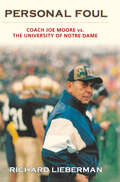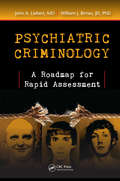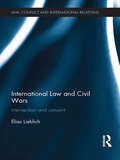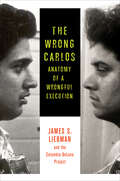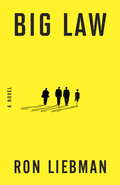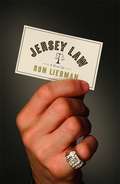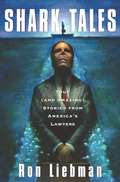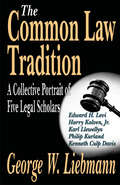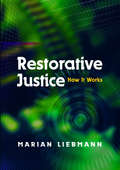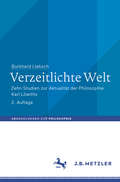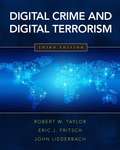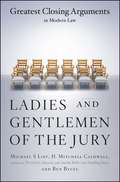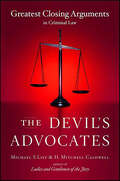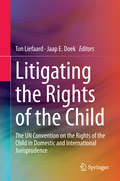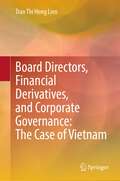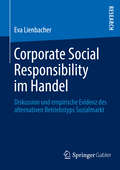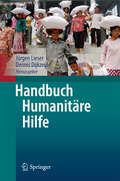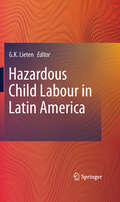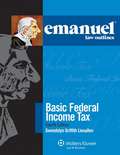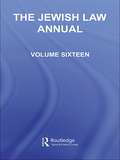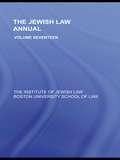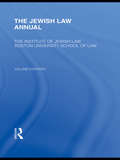- Table View
- List View
Personal Foul: Coach Joe Moore vs. The University of Notre Dame
by Richard LiebermanIt was bad enough when popular offensive line coach Joe Moore sued the University of Notre Dame for age discrimination--but matters got much worse when the lawsuit uncovered disquieting evidence of unethical and inappropriate conduct in a football program widely regarded as a model of probity. This is the dramatic story of that explosive lawsuit, which tarnished Notre Dame's burnished football image: the winner of eleven national titles; the home of legends Knute Rockne, the Gipper and the Four Horsemen; the subject of innumerable books and films--Notre Dame football has been idealized as everything that is good and right about American sports competition and, indeed, about America itself. This riveting story begins in November 1996, when Bob Davie is hired as head coach to replace the beloved Lou Holtz. In one of his first-and most fateful-executive decisions, Davie fires 64 year old Joe Moore because--as Davie puts it--he needs someone younger for the job. Attorney Rick Lieberman takes on Joe Moore's case and in this absorbing book he describes the trial and the enormous tensions to which litigants like Joe Moore are subject. This is a David and Goliath story in which the Notre Dame attorneys attempt to destroy Joe Moore's reputation as both a coach and a man. In the process, Davie's own background comes under close scrutiny as a reporter's investigation reveals some damning evidence. And as the trial proceeds, Notre Dame's football program is shown to be rife with legal improprieties and inappropriate behavior involving both coaches and administrators. Anyone interested in sports, in the law, in stories of blatant injustice--and in Notre Dame--will find Personal Foul a fascinating, revealing and memorable read.
Psychiatric Criminology: A Roadmap for Rapid Assessment
by John A. Liebert, MD William J. Birnes, JD, PhDSince the shutdown of our public psychiatry system, the seriously mentally ill are now mostly managed by public safety officers, school officials, emergency first responders and social workers with little experience in recognizing symptoms, triggers and issues. This book addresses the need to recognize the psychiatric component of criminological issues and the methodology of dealing with it on a practical as well as academic basis. It provides a roadmap for training in rapid assessment built on evidence-based emergency psychiatry protocols.
Korruption in Deutschland: Ein Überblick über den Stand der Korruptionsforschung seit 1945 (Forum für Verwaltungs‐ und Polizeiwissenschaft)
by Karlhans LieblDas Buch führt die wichtigsten Strömungen der Korruptionsforschung seit 1945 auf. Ein besonderes Augenmerk wird dabei auf die deutsche Forschungslandschaft gelegt. Weitere Schwerpunkte sind die Untersuchungen zum Umfang der Korruption, methdoische Probleme der Erhebung von Daten zur Korruption und Präventionsvorschläge. Letzterer Gesichtspunkt hat wieder einen besonderen Blick auf Deutschland. Abschließend werden die bisherigen Forschungen bewertet und Forderungen für zukünftige Untersuchungen dargelegt.
Auswirkungen der Liberalisierung des Internethandels in Europa auf die Arzneimittelkriminalität
by Karlhans Liebl Arndt Sinn Hans Schulte-Nölke Bernd J. Hartmann Roland Schmitz Martin SteinebachDieses Handbuch beleuchtet den Internetversandhandel mit illegalen Arzneimitteln über illegale Online-„Apotheken“, der sich zu einem auffälligen Wachstumsmarkt entwickelt hat. Durch die hohen Gewinnmargen und das niedrige Entdeckungsrisiko ist der Handel mit gefälschten Arzneimitteln mittlerweile weitaus attraktiver geworden als der Handel mit Betäubungsmitteln und bietet Potential als Geschäftsfeld der organisierten Kriminalität.Diesem Szenario entsprechend verfolgt das Handbuch bei der Untersuchung internetgestützter Arzneimittelkriminalität einen ganzheitlichen Ansatz, indem eine empirische Aufarbeitung der Täter- und Tatstrukturen in diesem Kriminalitätsbereich ebenso vorgenommen wird wie die Zeichnung des Lagebildes für die Bundesrepublik Deutschland. Im Hauptteil wird die Rechtslage zur Arzneimittelkriminalität in allen 28 EU-Mitgliedstaaten mit schwerpunktmäßiger Berücksichtigung der Aspekte des materiellen Straf- und Prozessrechts rechtsvergleichend aufbereitet, und es werden die einschlägigen internationalen Vorgaben im Bereich der Arzneimittelkriminalität beleuchtet. Außerdem werden zivil- und öffentlich-rechtliche Interventions- und Präventionsalternativen vorgestellt. Nicht zuletzt wird auch eine für die Ermittlungsarbeit entwickelte technische Lösung zur Verfolgung von Arzneimittelstraftaten im Internet vorgestellt. Einschlägige case-studies und eine Szenarioanalyse zur prognostischen Entwicklung der Arzneimittelkriminalität runden die Darstellung ab.Abschließend werden sowohl der Reformbedarf erhoben als auch konkrete Handlungsempfehlungen ausgesprochen, um Konzepte der Verfolgung internetgestützter Arzneimittelkriminalität in Deutschland und Europa zu verbessern und eine breite Datenbasis für den Gesetzgeber zur effektiveren Gesetzgebung zu schaffen.
International Law and Civil Wars: Intervention and Consent (Law, Conflict and International Relations)
by Eliav LieblichThis book examines the international law of forcible intervention in civil wars, in particular the role of party-consent in affecting the legality of such intervention. In modern international law, it is a near consensus that no state can use force against another – the main exceptions being self-defence and actions mandated by a UN Security Council resolution. However, one more potential exception exists: forcible intervention undertaken upon the invitation or consent of a government, seeking assistance in confronting armed opposition groups within its territory. Although the latter exception is of increasing importance, the numerous questions it raises have received scant attention in the current body of literature. This volume fills this gap by analyzing the consent-exception in a wide context, and attempting to delineate its limits, including cases in which government consent power is not only negated, but might be transferred to opposition groups. The book also discusses the concept of consensual intervention in contemporary international law, in juxtaposition to traditional legal doctrines. It traces the development of law in this context by drawing from historical examples such as the Spanish Civil War, as well as recent cases such those of the Democratic Republic of the Congo, Somalia, Libya, and Syria. This book will be of much interest to students of international law, civil wars, the Responsibility to Protect, war and conflict studies, and IR in general.
The Wrong Carlos: Anatomy of a Wrongful Execution
by James Liebman Shawn Crowley Andrew Markquart Lauren Rosenberg Lauren White Daniel ZharkovskyIn 1989, Texas executed Carlos DeLuna, a poor Hispanic man with childlike intelligence, for the murder of Wanda Lopez, a convenience store clerk. His execution passed unnoticed for years until a team of Columbia Law School faculty and students almost accidentally chose to investigate his case and found that DeLuna almost certainly was innocent. They discovered that no one had cared enough about either the defendant or the victim to make sure the real perpetrator was found. Everything that could go wrong in a criminal case did. This book documents DeLuna's conviction, which was based on a single, nighttime, cross-ethnic eyewitness identification with no corroborating forensic evidence. At his trial, DeLuna's defense, that another man named Carlos had committed the crime, was not taken seriously. The lead prosecutor told the jury that the other Carlos, Carlos Hernandez, was a "phantom" of DeLuna's imagination. In upholding the death penalty on appeal, both the state and federal courts concluded the same thing: Carlos Hernandez did not exist.The evidence the Columbia team uncovered reveals that Hernandez not only existed but was well known to the police and prosecutors. He had a long history of violent crimes similar to the one for which DeLuna was executed. Families of both Carloses mistook photos of each for the other, and Hernandez's violence continued after DeLuna was put to death. This book and its website (thewrongcarlos.net) reproduce law-enforcement, crime lab, lawyer, court, social service, media, and witness records, as well as court transcripts, photographs, radio traffic, and audio and videotaped interviews, documenting one of the most comprehensive investigations into a criminal case in U.S. history. The result is eye-opening yet may not be unusual. Faulty eyewitness testimony, shoddy legal representation, and prosecutorial misfeasance continue to put innocent people at risk of execution. The principal investigators conclude with novel suggestions for improving accuracy among the police, prosecutors, forensic scientists, and judges.
The Wrong Carlos: Anatomy of a Wrongful Execution
by James S. Liebman The Columbia DeLuna ProjectA Columbia Law School team&’s in-depth examination of one man&’s 1989 wrongful conviction and execution for murder. In 1989, Texas executed Carlos DeLuna, a poor Hispanic man with childlike intelligence, for the murder of Wanda Lopez, a convenience store clerk. His execution passed unnoticed for years until a team of Columbia Law School faculty and students chose to investigate his case and found that DeLuna almost certainly was innocent. No one had cared enough about either the defendant or the victim to make sure the real perpetrator was found. Everything that could go wrong in a criminal case did. DeLuna&’s conviction was based on a single, nighttime, cross-ethnic eyewitness identification with no corroborating forensic evidence. At his trial, DeLuna&’s defense—that another Carlos had committed the crime—was not taken seriously. The lead prosecutor told the jury that the other Carlos, Carlos Hernandez, was a &“phantom&” of DeLuna&’s imagination. In upholding the death penalty on appeal, both the state and federal courts concluded the same thing: Carlos Hernandez did not exist. However, he not only existed, but also had a long history of violent crimes . . . This book and its website (thewrongcarlos.net) reproduce law-enforcement, crime lab, lawyer, court, social service, media, and witness records, as well as court transcripts, photographs, radio traffic, and audio and videotaped interviews, documenting one of the most comprehensive investigations into a criminal case in US history. &“This book will become a classic in the field.&” —Austin Sarat, Amherst College &“[An] infuriating yet engrossing book on wrongful conviction...An important critique of our legal system.&” —Publishers Weekly
Big Law: A Novel
by Ron Liebman“Big Law has it all. A locomotive drive, a fantastic, appealing, big-hearted narrative voice, and an inside and very entertaining look at the intersection of big law and big business. Smart and truly unputdownable.” —John Lescroart As a young partner at Dunn & Sullivan, one of New York's most prestigious law firms, Carney Blake has represented dozens of high-profile clients. But being a pawn of Big Law often means defending the corporate dirt bags of the world—the spillers, the drillers, and the killers. Morality aside, Carney is starting to make a name for himself, despite having a father who resents his success and an unpredictable big brother bent on self-destruction. So when Carney is suddenly asked by his firm's chairman to represent the plaintiffs in a class action lawsuit—and not, as usual, the corporate bad guys—he warily accepts. Maybe they're turning a corner, he thinks. And even if they aren't, when else has a junior partner been assigned such a major case, with a possible billion dollar payout? But Carney can't fool himself for very long. As he digs deeper into the case, he uncovers corruption and maliciously orchestrated schemes that go straight to the top of Dunn & Sullivan—along with the true motives behind his placement on the case. Written by former top litigator Ron Liebman, Big Law is a thrilling, fast-paced roman à clef that exposes the secrecy, deception, and machinations underlining America’s most powerful mega-firms.
Jersey Law
by Ron Liebman"There are no doubt more qualified lawyers around here. Most probably across the river in Philadelphia. But know what? Me and Mickie have got them scratching their heads. They're thinking, How come those two guys keep winning their cases?" --from chapter two of JERSEY LAW NOT SINCE THE SOPRANOS HAS THE UNDERBELLY OF THE STATE OF NEW JERSEY BEEN BROUGHT SO VIVIDLY TO LIFE. Meet Mickie and Junne. That's Mickie Mezzonatti and Salvatore "Junne" Salerno of Camden, New Jersey, a lovable pair of cops-turned-attorneys who defend and corral New Jersey's worst of the worst. Set in the streets and courtrooms of Camden, JERSEY LAW is the story of Junne and Mickie's attempts to spring longtime client Slippery Williams, a charismatic drug lord who rules the local underworld, from jail. Junne and Mickie owe Slippery big time. He once saved their lives--literally--after a previous client tried to have our heroes murdered. But this case turns out to be much more complicated and far more perilous than Junne and Mickie imagined, and, once again, they'll be lucky if they survive to hear the verdict. Dark, witty, and fast, JERSEY LAW is a juicy, cinematic thriller that will enthrall readers through the very last page.
Shark Tales
by Ron LiebmanQUESTION: How many lawyers does it take to finish the roof of a two-thousand-square-foot house with dormers? ANSWER: Depends on how thin you slice them. Lawyers, and, more to the point, lawyer stories, have been sliced, diced, and presented for consumption for centuries. Ever since Dick the Butcher suggested in Shakespeare's Henry VI Part 2 that "the first thing we do, let's kill all the lawyers," the profession has exhibited a strong appeal for readers...to say nothing of an enduring image problem. Today, stories about life on the front lines of the nation's courtrooms fuel everything from the novels of John Grisham and Scott Turow to television shows like The Practice, Ally McBeal, and L.A. Law. Now in Shark Tales comes a remarkable collection of witty, eccentric, and astounding war stories -- guaranteed to be mostly true -- supplied by hundreds of attorneys and displaying the nitty-gritty of life in court. To create Shark Tales, famed Washington lawyer Ron Liebman solicited stories from hundreds of colleagues in America and Britain...and not just any stories. He asked them to supply humor, of course, but also to describe the day on which they were proudest to be lawyers, and the day when they were most ashamed. He asked for stories of wild divorces and tragic losses. He asked them to describe the worst judges and best witnesses they'd ever encountered. He reviewed actual court transcripts, and found material like the following: QUESTION: Doctor, how many autopsies have you performed on dead people? ANSWER: All my autopsies have been on dead people. Here is the tale of a case settled not by a fingerprint left behind at the scene of the crime, but an entire finger. Here is a lawyer agreeing to defend a client accused of passing bad checks...a client who promptly bounced the retainer check. Here you'll meet a proud son, having won his first case, telling his father -- also a lawyer -- that "justice has triumphed," to which the father replied, "Appeal at once." And here is a senior partner in a Washington law firm meeting with a group of Japanese corporate clients with whom he seems compelled to reminisce about the first time he saw Tokyo: as a bomber pilot in 1945. Funny, revealing, sad, poignant, and even exciting, Shark Tales is a hugely entertaining book for legal junkies -- authentic slices of life that reveal what really makes the law everyone's obsession.
The Common Law Tradition: A Collective Portrait of Five Legal Scholars
by George LiebmannThis book commemorates a place and a time in American law teaching, but more importantly, an outlook: the common law tradition. That outlook was empirical and tolerant. These values were carried into expression by a group of people who were not part of a cult or faction nor ruled by the herd instinct. Now in paperback, The Common Law Tradition is a collective portrait of five scholars who epitomize the tradition.The focus is Chicago in the 1960s. The five figures considered--Edward H. Levi, Harry Kalven, Jr., Karl Llewellyn, Philip Kurland, and Kenneth Culp Davis--did much to broaden the perspectives of the legal academy. Levi made use of sociology, economics, and comparative law. Kalven collaborated with sociologists on the Jury Project and with economists on tax law and auto compensation plans. Llewellyn's commitment to empirical research underpinned his work on the Uniform Commercial Code. Kurland's approach to constitutional law was highlighted by his insistence on the relevance of legal history. Davis was an energetic comparativist in his work on administrative law. What distinguished these Chicagoans is that their work was practical and rooted in the law, and hence yielded concrete applications. The group's diversity, the tolerant atmosphere in which they taught and wrote, and the attachment of its individual members to empirical approaches differentiate them from today's legal scholars and make their ideas of continuing importance.
Restorative Justice: How It Works
by Marian LiebmannThis comprehensive guide provides an accessible introduction to the philosophy of restorative justice and its practical application in a wide range of settings, showing how it can help both victims and offenders when harm has been done. Drawing on many years' experience of working in victim support, probation, mediation and restorative practices, Marian Liebmann uses pertinent case examples to illustrate how restorative justice can be used effectively to work with crime and its effects. Also included are sections on confronting bullying in schools, dealing with sexual and racial violence, tackling antisocial behaviour and community reconciliation after war. Whether in the context of families, schools, communities, criminal justice or prisons, the author argues that restorative justice is a `seamless philosophy' which can be applied flexibly to meet diverse needs. Liebmann provides an international outlook, examining how restorative justice is practised around the world, including traditional Maori and Aboriginal approaches. Restorative Justice: How It Works is a key reference for magistrates, social workers, probation officers, Youth Offending Team workers, police, teachers and health professionals, as well as the lay reader.
Verzeitlichte Welt: Zehn Studien zur Aktualität der Philosophie Karl Löwiths (Abhandlungen zur Philosophie)
by Burkhard LiebschDas 20. Jahrhundert hat nach der Beobachtung Karl Löwiths eine rückhaltlose Auslieferung der Menschen an Zeit und Geschichte zum Vorschein gebracht. Deren extreme Gewaltsamkeit war für ihn der Anlass, sich auf die ›natürliche‹ Welt zurückzubesinnen, die den Menschen einen verlässlichen Halt bieten sollte. Im Zeichen des oft ausgerufenen Endes der Geschichte, aber auch der Globalisierung mit ihren drängenden ökologischen Fragen ist Löwiths Beitrag zu der Frage, was die Welt der Menschen als solche ausmacht, von höchster Aktualität.Die bereits vorliegenden neun Studien zur Philosophie Löwiths werden durch eine abschließende zehnte ergänzt, die ganz dieser nach wie vor virulenten Aktualität gewidmet ist.
Digital Crime and Digital Terrorism (3rd Edition)
by John Liederbach Robert W. Taylor Eric J. FritschThis book focuses on both the technical aspects of digital crime as well as behavioral aspects of computer hackers, virus writers, terrorists and other offenders. Using real life examples and case studies, the book examines the history, development, extent and types of digital crime and digital terrorism as well as current legislation and law enforcement practices designed to prevent, investigate and prosecute these crimes. For professionals in the technical field as well as forensic investigators and other criminal justice professionals.
Ladies and Gentlemen of the Jury: Greatest Closing Arguments in Modern Law
by Michael S. LiefUntil now, only the twelve jurors who sat in judgment were able to appreciate these virtuoso performances, where weeks of testimony were boiled down and presented with flair, wit, and high drama. For five years the authors researched every archive from those of the L.A. Times to the dusty stacks of the National Archives in Washington, D.C., and readers can now lose themselves in the summations of America's finest litigators. Clarence Darrow saves Leopold and Loeb from the gallows in the Roaring Twenties. Gerry Spence takes on the nuclear power industry for the death of Karen Silkwood in a modern-day David and Goliath struggle. Vincent Bugliosi squares off against the madness of Charles Manson and his murderous "family" in the aftermath of their bloody spree. Clara Foltz, the first woman to practice law in California, argues passionately to an all-male jury, defending her place in the courtroom. Bobby DeLaughter brings the killer of civil-rights leader Medgar Evers to justice after thirty years and two mistrials. Aubrey Daniel brings Lt. William Calley, Jr., to justice for the My Lai massacre. William Kunstler challenges the establishment after the '68 Chicago riots in his defense of yippie leaders known as the Chicago Seven. Each closing argument is put into context by the authors, who provide historical background, a brief biography of each attorney, and commentary, pointing out the trial tactics used to great effect by the lawyers, all in language that is jargon-free for the benefit of the lay reader.
The Devil's Advocates: Greatest Closing Arguments in Criminal Law
by Michael S. Lief H. Mitchell CaldwellFrom the authors of the acclaimed Ladies and Gentlemen of the Jury, and featuring some of the most important cases in criminal law, The Devil's Advocates is the final volume of a must-have trilogy of the best closing arguments in American legal history. Criminal law is considered by many to be the most exciting of the legal specialties, and here the authors turn to the type of dramatic crimes and trials that have so captivated the public -- becoming fodder for countless television shows and legal thrillers. But the eight cases in this collection have also set historical precedents and illuminated underlying principles of the American criminal justice system. Future president John Adams makes clear that even the most despised and vilified criminal is entitled to a legal defense in the argument he delivers on behalf of the British soldiers who shot and killed five Americans during the Boston Massacre. The always-controversial temporary-insanity defense makes its debut within sight of the White House when, in front of horrified onlookers, a prominent congressman guns down the district attorney over an extramarital affair. Clarence Darrow provides a ringing defense of a black family charged with using deadly force to defend themselves from a violent mob -- an argument that refines the concept of self-defense and its applicability to all races. The treason trial of Aaron Burr, accused of plotting to "steal" the western territories of the United States and form a new country with himself as its head, offers a fascinating glimpse into a rare type of prosecution, as well as a look at one of the most interesting traitors in the nation's history. Perhaps the best-known case in the book is that of Ernesto Miranda, the accused rapist whose trial led to the Supreme Court decision requiring police to advise suspects of their rights to remain silent and to have an attorney present -- their Miranda rights. Each of the eight cases presented here is given legal and cultural context, including a brief historical introduction, a biographical sketch of the attorneys involved, highlights of trial testimony, analysis of the closing arguments, and a summary of the trial's impact on its participants and our country. In clear, jargon-free prose, Michael S Lief and H. Mitchell Caldwell make these pivotal cases come to vibrant life for every reader.
Litigating the Rights of the Child
by Ton Liefaard Jaap E. DoekThis book examines the impact of the UN Convention on the Rights of the Child (CRC) on national and international jurisprudence, since its adoption in 1989. It offers state of the art knowledge on the functions, challenges and limitations of the CRC in domestic, regional and international children's rights litigation. Litigating the Rights of the Child provides insight in the role of the CRC in domestic jurisprudence in ten countries from different parts of the world, with civil law, common law and Islamic law systems. In addition, it offers analyses of the jurisprudence of regional courts, in Europe and the Americas, and of human rights treaty bodies, including the Human Rights Committee, Committee on the Elimination of Discrimination against Women and the African Committee of Experts on the Rights and Welfare of the Child. This book presents a global and comparative picture on the use of the CRC in litigation and identifies emerging trends. This book serves as an important source of reference and inspiration for academics, students, legal professionals, including judges and lawyers, and (inter)national organisations working in the area of children's rights.
Board Directors, Financial Derivatives, and Corporate Governance: The Case of Vietnam
by Tran Thi LienThis book gives readers a look inside the boardrooms and directors’ minds—a desirable but highly challenging task for researchers due to the lack of access to top teams in organizations. This book breaks through that barrier with a mixed-methods investigation of boardrooms in the emerging country of Vietnam particularly on the topic of financial derivatives. Directors are the leading players within the corporate governance framework. The general effectiveness of the board depends on their roles, processes and competencies. Given the scandals marring the history of the financial industry, this book aims to tackle the question of whether board directors have the financial acumen required to handle the tricky instruments of financial derivatives through interviews with board directors and analysis of their organizations. Providing a managerial perspective of financial derivatives, this distinguishes itself from more popular financial engineering books and would be a useful read for government officials, board directors, training organizations and scholars, particularly in Vietnam.
Corporate Social Responsibility im Handel: Diskussion und empirische Evidenz des alternativen Betriebstyps Sozialmarkt
by Eva LienbacherHandelsunternehmen prägen und prägten das Wirtschaftsgeschehen und unsere Gesellschaft seit jeher wesentlich. Neben dem vorrangigen Bestreben, Gewinn zu generieren, verfolgen sie oftmals auch soziale Ziele. Der Beitrag dieser Arbeit ist die grundlegende, deskriptive Aufarbeitung der Forschungsströmung CSR im Handel sowie des alternativen Betriebstyps Sozialmarkt, ein Handelsunternehmen, dass die soziale Zielsetzung über die Gewinnorientierung stellt. Darüber hinaus werden generelle Erkenntnisse zu CSR und der CSR-Kommunikation auf den Lebensmitteleinzelhandel übertragen und konkrete Handlungsempfehlungen für die Marketingforschung und -praxis abgeleitet.
Handbuch Humanitäre Hilfe
by Jürgen Lieser Dennis DijkzeulMenschen, die infolge von Gewaltkonflikten oder Naturkatastrophen in eine humanitäre Notlage geraten sind, benötigen Hilfe. Diese ethische Selbstverständlichkeit hat mit der Gründung des Roten Kreuzes vor mehr als 150 Jahren einen institutionellen Rahmen bekommen. Seitdem ist die humanitäre Hilfe, also das organisierte und professionelle Helfen in humanitären Krisen und Katastrophen, stark gewachsen. Humanitäre Organisationen sind fast weltweit aktiv. In der Praxis erweist sich die humanitäre Hilfe als eine große Herausforderung. Hilfsorganisationen stehen unter einem hohen Erwartungs- und Zeitdruck: Sie sollen schnell, effektiv und reibungslos Hilfe zum Überleben leisten. Die Hilfe soll unparteiisch, neutral und nachhaltig sein und sich allein an den Bedürfnissen der betroffenen Menschen orientieren. Staatliche Geber, private Spender und auch die Hilfeempfänger verlangen Rechenschaft über den sinnvollen Einsatz der Hilfsgelder. Seit Jahren nehmen Naturkatastrophen in Zahl und Umfang zu. Gewaltkonflikte entwickeln sich zu chronischen Krisen mit einer Kriegswirtschaft, die es schwieriger macht, die Betroffenen zu unterstützen. Die Helferinnen und Helfer sehen sich konfrontiert mit zunehmend komplexeren Notlagen, divergierenden Geberinteressen, politischer Einflussnahme und konkurrierenden Hilfsangeboten. Sie geraten zwischen die Fronten und werden Opfer von gewaltsamen Übergriffen. Auch Missbrauch und politische Instrumentalisierung kommen vor. Dieses Buch trägt zu einem besseren Verständnis von humanitären Krisen und ihren Folgen bei. Es zeigt, wie sich die humanitäre Hilfe in einem internationalen System entwickelt hat und wie die verschiedenen Akteure ihre Rolle definieren und ausfüllen. Es zeigt auch, wie schwierig es ist, dem hohen ethischen Anspruch an unparteiische und von politischen Interessen unabhängige Hilfe gerecht zu werden. Die Autorinnen und Autoren - Vertreter von Hilfsorganisationen und Wissenschaft - zeigen aus unterschiedlichen Perspektiven auf, wie humanitäre Hilfe zwischen Anspruch und Wirklichkeit versucht, dem weltweit wachsenden Hilfebedarf gerecht zu werden.
Hazardous Child Labour in Latin America
by G. K. LietenIn order to bridge the lack of information on child labour and to stimulate policy interventions the IREWOC Foundation (International Research on Working Children) has undertaken action-based research in the field of the worst forms of child labour in Latin America. In 2006 and 2007 a comparative study on the Worst Forms of Child Labour was carried out in 7 different economic sectors in Bolivia, Guatemala and Peru focussing on the hazardous worst forms. The central research objectives were as follows: * to map the working and living situations of children who are working in specific economic sectors and what the consequences of this work are for their physical and emotional wellbeing. * to investigate the reasons why these children are working in these worst forms sectors. The research results were expected to give important insights into the currently polarised debate between those who state child labour is above all related to cultural considerations and those who state that economic reasons are fundamental to the phenomena of child labour. * to map the existing policy initiatives for child labourers in the worst forms and to identify the best practices. In the face of challenges imposed by achieving the Millennium Development Goals (MDGs) set by the UN, specific attention was paid to educational initiatives. Is education a useful tool in combating child labour, and vice versa, is child labour a significant obstacle to achieving universal primary education? Although the evidence from the various cases discussed in the book illustrate positive trends in terms of the worst forms of child labor, thousands of children were still found to be engaged in activities that form a direct threat to their physical, mental and moral health and jeopardize their education. This book proposes several practical recommendations for possible interventions.
Basic Federal Income Tax (Fourth Edition)
by Gwendolyn Griffith LieuallenThe most trusted name in law school outlines, Emanuel Law Outlines support your class preparation, provide reference for your outline creation, and supply a comprehensive breakdown of topic matter for your entire study process. Created by Steven Emanuel, these course outlines have been relied on by generations of law students. Each title includes both capsule and detailed versions of the critical issues and key topics you must know to master the course. Also included are exam questions with model answers, an alpha-list of cases, and a cross reference table of cases for all of the leading casebooks.
The Jewish Law Annual Volume 16 (Jewish Law Annual #10)
by Berachyahu LifshitzVolume 16 of The Jewish Law Annual adds to the growing list of articles on Jewish Law that have been published in volumes 1-15 of this series, providing English-speaking readers with scholarly material meeting the highest academic standards. The volume contains seven articles diverse in their scope and focus, encompassing legal, historic, textual, comparitive and conceptual analysis, as well as a chronicle of cases of interest, and a survey of recent literature. Three of the articles, one of which explores references to Genesis in (western) canon law, make up a special section on the book of Genesis. The other topics covered are: suicide as an act of atonement in Jewish law; early interpretations of the Bible and Talmud as reflecting medieval legal realia; Ashkenazic codifiers in Spain; and authority, custom and innovation in the seventeenth-century Italian halakhic encyclopedia, Pahad Yitzhak.
The Jewish Law Annual Volume 17 (Jewish Law Annual)
by Berachyahu LifshitzVolume 17 of The Jewish Law Annual adds to the growing list of articles on Jewish law that have been published in volumes 1-16 of this series, providing English-speaking readers with scholarly articles presenting jurisprudential, historical, textual and comparative analysis of issues in Jewish law. The volume contains seven articles diverse in their scope and focus. Two articles are devoted to the halakhic thought of Rabbi A. I Kook; two treat classic legal questions: breach of a promise to marry, and the legal capacity of minors; two examine aspects of the judicial process, one exploring talmudic analyses of the biblical requirement that courts be established in every town, and the other, post-talmudic views on judicial authority in cases suspected of fraudulent claims. Another article addresses the fascinating question of the epistemic-pedagogic worldviews of the rival Tannaitic legal academics, the House of Hillel and the House of Shammai. The volume concludes with a section on Israeli legislation that adduces or is informed by Jewish law, and two reviews of a much-discussed recent book on a topic of considerable contemporary interest: the agunah problem.
The Jewish Law Annual Volume 18 (Jewish Law Annual #18)
by Berachyahu LifshitzVolume 18 of The Jewish Law Annual contains six comprehensive articles on various aspects of Jewish law. Three articles address family law. One addresses the painful issue of the plight of the wife whose husband withholds conjugal relations. In a marriage where relations are withheld, the wife may seek a divorce, while her husband may withhold divorce. Prolonged withholding of divorce renders the wife an agunah, that is, a wife chained to a dead marriage and unable to start anew and rebuild her life. The author explores the halakhic feasibility of allowing a wife in such a predicament to bring a claim for damages against her husband for infliction of mental distress. If such claims are allowed, recalcitrant husbands may rethink their intransigence and consent to grant the divorce. Another article examines the evolution of halakhic thinking on the parent–child relationship. It traces the stages by which halakhic family law changed from a basically patriarchal system in which both mother and the child were deemed subject to the father’s will, to a more balanced system where wife and husband have equal standing with respect to custody matters, and the best interest of the child is the main consideration in custody proceedings. In another article, halakhic attitudes to corporal punishment of children are analyzed. The author explores whether the "Spare the rod and spoil the child" adage, which is based on a verse from Proverbs, indeed reflects the position of Jewish law. He shows that in fact, while recourse to corporal punishment for educational purposes is permitted--subject to detailed qualifications that greatly limit its scope--two divergent approaches to corporal punishment can be discerned in the halakhic sources. One maintains that administration of corporal punishment can be a useful pedagogic tool of last resort, whereas the other seeks to minimize recourse to corporal punishment in the educational context, questioning its efficacy. The article shows that in any event, the notion that corporal punishment is required by the law, as some, invoking the "spare the rod" maxim, have maintained, is by no means borne out by the halakhic literature. The volume also features a fascinating article on the history of two societies founded in London to further the study of Jewish law using modern scholarly methodologies. One society was active at the end of the 1920s and beginning of the 1930s, the second was active a decade later. The article explains the background to the establishment of the societies and analyzes the societies’ objectives, leaders and memberships. Both societies were founded with the intention of reformulating the classic halakhic sources in a manner that would render them suitable for contemporary application in the nascent Jewish state. But as the author shows, ultimately much of their energy was devoted to presenting the said sources to the non-Jewish legal world, for the purpose of reciprocal enrichment and edification. Rounding out the volume are two jurisprudential studies on classic legal problems. The first explores the prohibition against seeking a second legal ruling when a ruling declaring something forbidden has been handed down. What is the scope of this rule, and in what ways does it differ from the res judicata principle in western law? The author shows that both procedural and substantive readings of the prohibition were put forward in the talmudic commentaries, and explains the jurisprudential implications of these different readings. The second article examines the question of the agent who breaches his principal’s trust, focusing on the case of the agent who executes the act he was sent to carry out, but does so for himself, rather than his principal. To what extent is he liable for ensuing damages to the principal, and is his act invariably deemed reprehensible? Another issue is the legal status of the transaction carried out by such an agent. Do the rights and obligations ge
